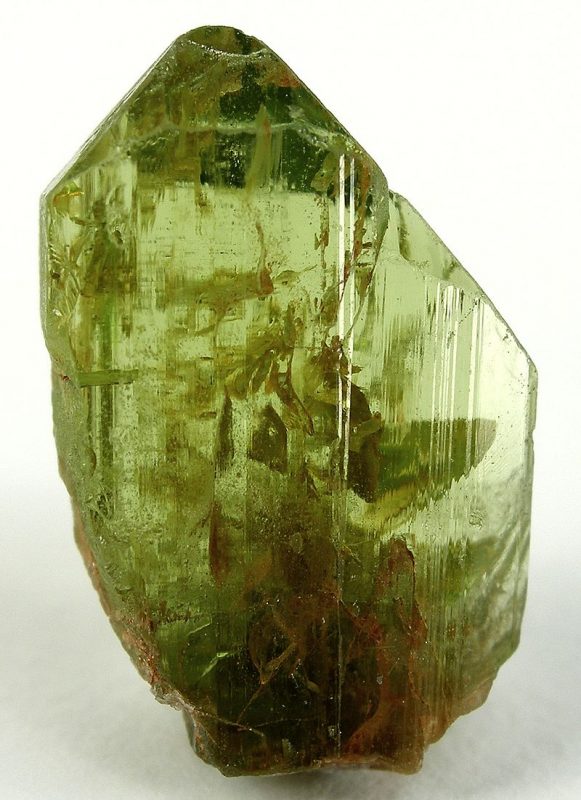
Were you born in August? If so, you have a choice of three birthstones: green, crystalline peridot; vibrant and colorful spinel; or striped sardonyx.
August birthstone peridot
Peridot is a gem-quality transparent variety of olivine, a mineral composed of magnesium-iron silicates. The color of olivine ranges from olive to lime green, sometimes with a brownish tinge. Small amounts of iron in the crystal give it the green color, while the brownish tinge indicates a higher iron content.
By the way, some of the finest peridot stones appear greener under artificial light and have the nickname evening emeralds.
Since ancient times, people produced and mined peridot on an island in the Red Sea named Zabargad, which means olivine in Arabic. It is a small, desolate island where nothing grows. Plus, there is no fresh water, and it is scorchingly hot year round except in the middle of winter. Gem crystals ranging from millimeters to several centimeters line fissures in the rock found in some locations on the island. As a matter of fact, beaches near the deposits have a greenish hue due to tiny green peridot crystals.
Norway, Brazil, China, Kenya, Sri Lanka, Australia, Mexico, and the Mogok district of Myanmar (Burma) also produce crystals of peridot. Additionally, the San Carlos Indian reservation in Arizona is known to have small stones of peridot. Finally, even some meteorites contain peridot.
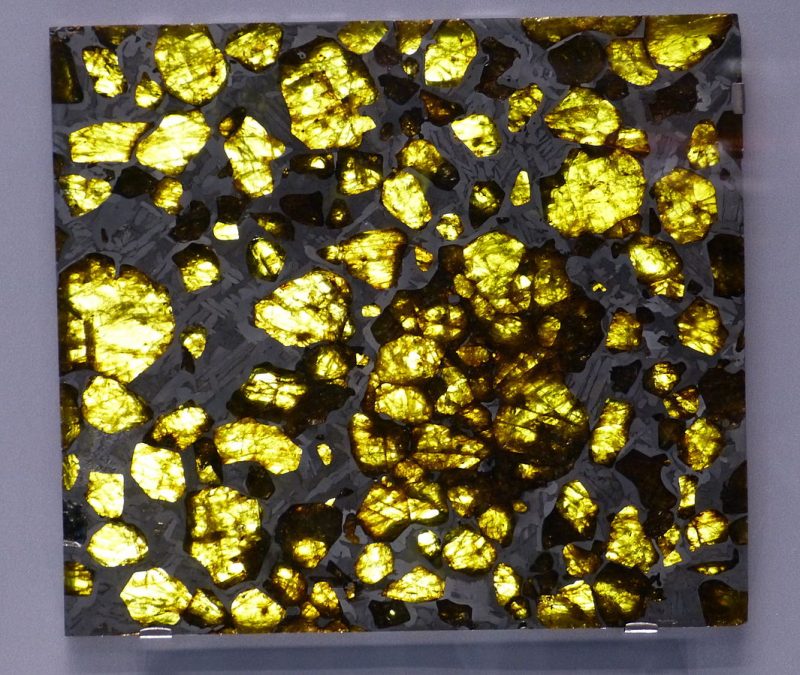
Peridot history
Because peridot is among the oldest known gemstones, it has a long history. In fact, peridot was the “topaz” on the breastplate of Aaron, high priest of the Hebrews in the Hebrew Bible. Plus, ancient Egyptians created beads from peridot, from around 1580 BCE to 1350 BCE. And peridot was in popular use by Greeks and Romans as intaglios, rings, inlays and pendants.
Additionally, peridot was a revered symbol of the sun in ancient times. The Greeks believed that it brought royal dignity upon its wearer. During the Middle Ages, people wore pierced peridot strung on the hair of a donkey and attached to the left arm to ward off evil spirits. And the Crusaders thought that peridot stones were emeralds. So, they became featured as ornaments in churches back in Europe.
Furthermore, peridot was a prized gem late in the Ottoman empire (1299-1918). Turkish sultans collected probably the world’s largest peridot collection. The gold throne in Istanbul’s Topkapi museum contains 955 peridot cabochons (gems or beads cut in convex form and highly polished) up to 1 inch across. Plus, turban ornaments and jeweled boxes use peridots. However, the largest stone may be a 310-carat gem that belongs to the Smithsonian. A 192-carat stone of fine clear olive-green is part of the Russian crown jewels in the Kremlin.
August birthstone spinel
A recent addition to the August birthstones is colorful spinel. Spinel has been in use for centuries and is available in multiple colors. You can find them in vibrant shades of pink, orange, red, gray, green, purple and blue. They are often confused with rubies and sapphires. They typically contain magnesium and aluminum. Their colors are from iron, chromium, vanadium, and cobalt. Spinel have a Mohs hardness of 8, making them suitable for daily wear in rings.
In fact, many well-known rubies turned out to be spinel. The 170 carat Black Prince Ruby in the English crown and the 361 carat Timur Ruby – another part of the English crown jewels – are really spinels.
It wasn’t until the late 1700s that spinel was identified as a unique mineral. Until then, spinels were called rubies. As a matter of fact, a red spinel and a red ruby placed side-by-side would look identical. So, it’s not surprising that deposits of spinels are found with corundum (rubies and sapphires). Sources include areas in Sri Lanka, Tanzania, Afghanistan, Cambodia, Vietnam, Myanmar and Pakistan.
Even though rubies command a premium price, spinel is rarer than ruby. However, spinel is not as expensive as a ruby (or sapphire). Although, their popularity – and pricing – may continue to rise.
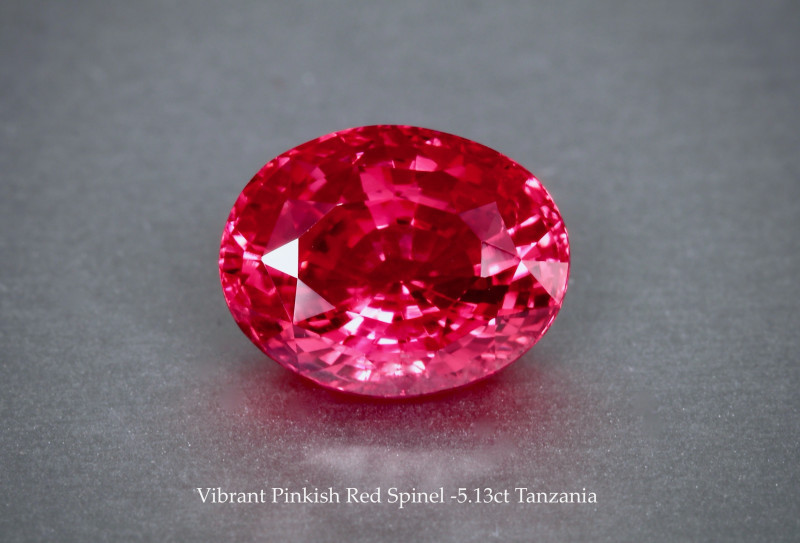
Spinel lore
It’s thought spinel helps with healing conditions such as inflammation and blood diseases. Plus, it’s said it can bring the wearer comfort and peace by reducing negative thoughts and feelings.
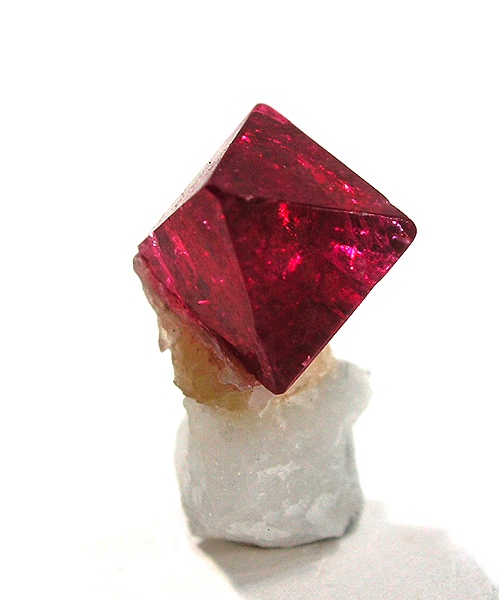
August birthstone sardonyx
Sardonyx is a variety of the silica mineral called chalcedony. This mineral contains stacked layers of tiny quartz fibers, giving it a banded appearance. Plus, the layers in these stones range from translucent to opaque. Also, the stones vary in color. They may be white, gray or other colorful shades.
Sardonyx stones usually contain flat white and brownish-red bands. Indeed, the word sardonyx comes from the Greek sard meaning “reddish brown” and onyx meaning “veined gem.” India produces the best stones. Plus, Germany, Czechoslovakia, Brazil, Uruguay, and the Lake Superior region and Oregon in the United States all have deposits of sardonyx.
Artists – both ancient and modern – often carve cameos and intaglios from sardonyx. Cameos are figures carved on a stone, where the white layer appears as relief and the colored layer is the background. Intaglios are the reverse of cameos. They are incised figures carved on the stone, through the dark layer to reveal the light layer.
Sardonyx is a relatively common and inexpensive gemstone. It was a favorite gemstone in ancient times, popular not only because it was attractive, but also because it was widely available. Unlike rare gemstones available only to royalty and nobility, less-wealthy people could obtain sardonyx.
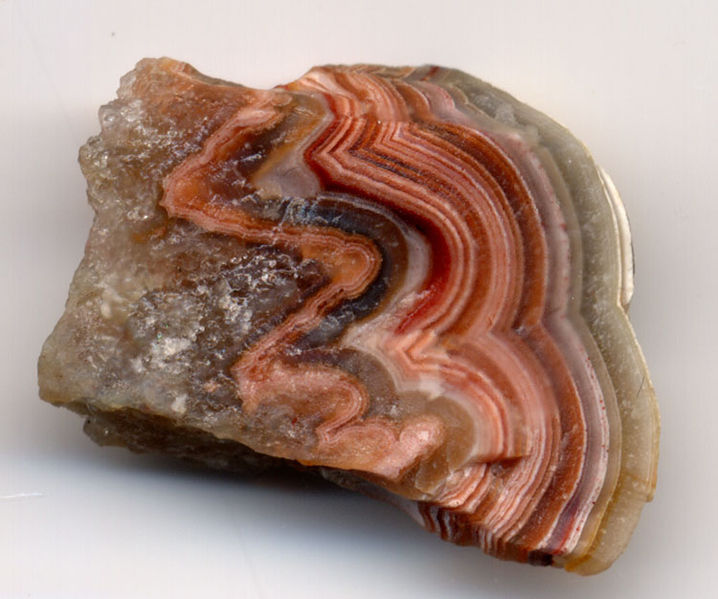
Sardonyx lore
Roman soldiers wore sardonyx talismans, objects bearing a sign of astrological influence to guard from evil and bring good fortune, engraved with heroes such as Hercules or Mars, god of war. And people believed that the stone would make the wearer as brave and daring as the figure carved on it. During the Renaissance, people believed sardonyx brought eloquence upon the wearer, making it valued by public speakers and orators.
Perhaps the most famous sardonyx stone was set in a gold ring, carved with the portrait of Queen Elizabeth I of England. The queen gave it to the Earl of Essex as a token of friendship, and she assured him that she would always come to his aid if he ever requested it.
So when the earl went to prison for treason and was facing beheading, he tried to send the ring to his queen. But it fell into the hands of Lady Nottingham, whose husband was an enemy of the Earl of Essex. Thinking that the earl was too proud to ask for her mercy, the queen allowed his execution. Then, it was not until the deathbed confession of Lady Nottingham that the queen learned the truth, which left her heartbroken.
Enjoying EarthSky so far? Sign up for our free daily newsletter today!
Birthstones for other months of the year
January birthstone
February birthstone
March birthstone
April birthstone
May birthstone
June birthstone
July birthstone
September birthstone
October birthstone
November birthstone
December birthstone
Bottom line: August babies have three birthstones, peridot, spinel, and sardonyx.











